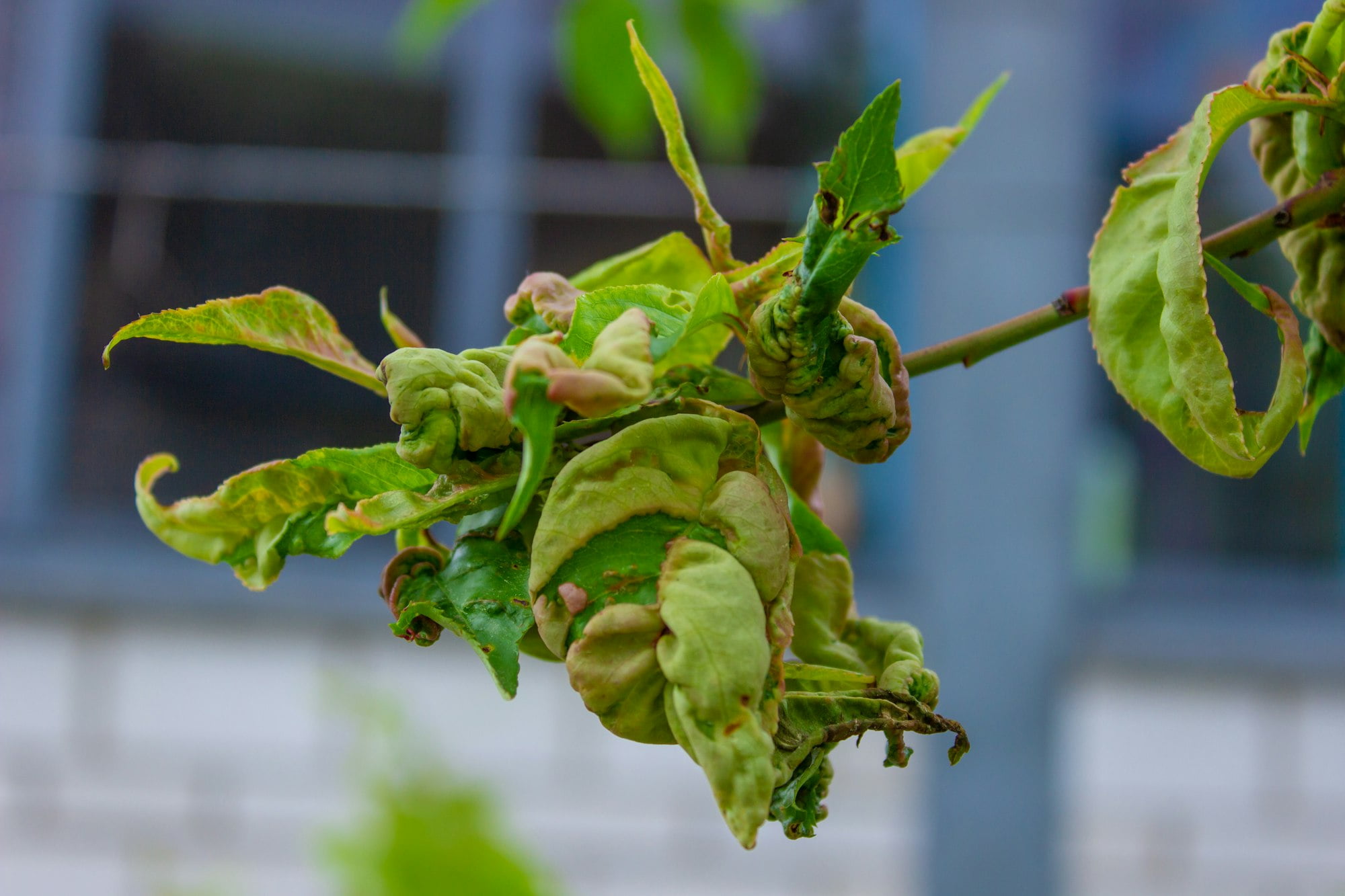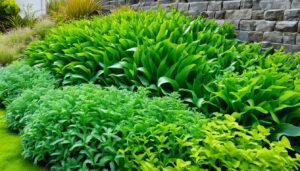Peach Leaf Curl is a disease caused by the fungus Taphrina deformans. It attacks peach and nectarine trees. The disease makes leaves twist, turn red, and look crinkled.
It loves the cold, wet, and cloudy weather of winter and early spring. To fight this disease, knowing what it does and how it spreads is key.
Quickly figuring out if your tree has this problem is very important. It can really affect the tree’s health and how much fruit it makes. Learning about Peach Leaf Curl’s life and how to stop it will keep your garden healthy. Be ready and well-informed to protect your trees.
Key Takeaways
- Understand that Peach Leaf Curl is caused by Taphrina deformans.
- Recognize the significance of early identification and swift intervention.
- Know that the disease thrives in wet, cold, and cloudy conditions.
- Utilize management strategies to prevent and control Peach Leaf Curl.
- Improve your garden’s health by staying proactive and informed.
Understanding Peach Leaf Curl: Symptoms and Causes
Peach Leaf Curl affects peach and nectarine trees badly. It’s important to know its symptoms and causes. Knowing this helps us act fast to manage it.
Common Symptoms of Peach Leaf Curl
You can spot Peach Leaf Curl if you know what to look for. Look for leaves that are distorted, red, and look puckered. These leaves might fall off early, hurting the tree’s health. Spotting these signs is the first step in identifying the disease.
Why Peach Leaf Curl is Prevalent
To manage Peach Leaf Curl well, know its causes. The Taphrina deformans fungus causes it, thriving in cold, wet winters and springs. Infected leaves grow velvety spores, spreading the disease. Knowing when the fungus thrives helps in managing its outbreaks.
Impact on Tree Growth and Health
Peach Leaf Curl greatly harms trees. The disease causes leaves to fall, which lowers the tree’s energy and growth. Without enough leaves, trees can get sunburnt more easily. Early detection and proper treatment are key to keeping trees healthy.
How to Prevent Peach Leaf Curl
Keeping your peach and nectarine trees free from peach leaf curl is vital. To do this, use both cultural practices and fungicides. Here, we share the best strategies.

Cultural Practices for Prevention
To control peach leaf curl well, you need to focus on making your trees strong. A key step is to remove and throw away leaves that are infected. This action helps stop the disease from spreading.
Some other important steps are:
- Watering: Trees that get enough water are heartier and can fight off diseases better.
- Fertilizing: By using organic fertilizer, you boost the tree’s strength against infections.
- Mulching: Putting down organic mulch keeps the soil moist and the temperature steady. It also stops weeds. All these factors lead to a healthier tree.
Effective Use of Fungicides
Using fungicides the right way is key to prevent peach leaf curl. Spraying the trees while they are dormant works well. A good time to apply copper fungicide is in the fall or early winter, before the buds start to open.
To get the timing right for fungicide, think about doing it around Thanksgiving. This timing helps make sure the treatment works well. Keep an eye on your trees and adjust when you treat them, depending on the weather. This will help you get the best results.
By using both cultural and fungicidal methods, you stand a good chance of keeping your trees healthy. In turn, they will be better protected against peach leaf curl.
Treating Peach Leaf Curl: Immediate Steps and Long-term Solutions
When it comes to peach leaf curl control, acting fast and with a plan is key. Start by removing infected leaves to stop the disease from spreading. Then, help the tree heal by giving it what it needs. Balanced fertilizing, mulching, and watering are key. It’s also vital to make sure your tree isn’t stressed.

Some organic treatments like seaweed fertilizer might help, but results can vary. It’s smart to try different methods to see what fits your situation best. For lasting peach leaf curl solutions, mix cultural practices with fungicides. This combo approach builds a strong defense against the disease coming back.
Keeping up with regular tree care and watching for disease signs are crucial. Pay extra attention to your tree during wet and cold seasons. This helps spot infections early on.
| Treatment Method | Immediate Steps | Long-term Solutions |
|---|---|---|
| Remove Affected Foliage | Yes | No |
| Fertilization & Watering | Yes | Yes |
| Seaweed Fertilizer | Optional | Optional |
| Proper Pruning | No | Yes |
| Fungicide Applications | Depends | Yes |
Combining immediate and long-term treatments helps gardeners manage peach leaf curl well. It makes sure peach trees stay healthy and fruitful.
Organic Remedies for Managing Peach Leaf Curl
Fighting peach leaf curl ecologically is both powerful and good for nature. We’ll look into natural ways to control it and why organic options are great.
Natural Control Methods
Applying seaweed fertilizer is a top organic choice for peach leaf curl. It may make leaves more resistant and slow the disease. Neem oil is also used to stop fungal spores. Using compost teas has helped many by making trees stronger.
Benefits of Organic Solutions
There are many pluses to using natural ways to manage peach leaf curl. These methods boost tree health without harmful chemicals. They also keep the soil clean for friendly bugs and worms. Plus, organic treatments mean less copper in our surroundings, which is better for the planet.
Conclusion
Peach Leaf Curl needs a full and early approach. It starts with noticing signs like twisted and wrinkled leaves early. Knowing when the disease likes to show up helps. This is usually in cold, wet conditions. This knowledge helps us act fast to stop it.
To treat Peach Leaf Curl well, you need to follow a few key steps. These include removing sick leaves and using copper fungicides when the tree isn’t growing. It also helps to keep your tree healthy with the right water and food. These steps fight the disease and make your peach and nectarine trees stronger.
Trying natural ways to handle the disease can also help over time. Using things like seaweed fertilizer might help, but results can vary. However, these natural options are good for your tree and the planet. By using a mix of strategies and keeping up with gardening tips, you can protect your trees. This leads to strong growth and lots of fruit every year.








